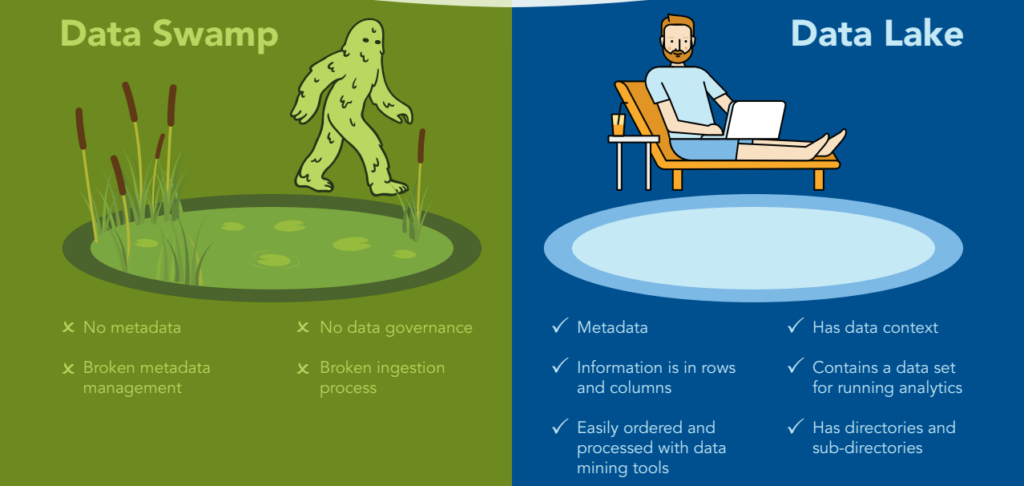Imagine a serene, expansive lake, its waters clear and full of diverse life. The kind of place where you’d like to sit by and admire the view, or even take a dive to explore the treasures beneath. This is what a well-maintained data lake resembles: organized, accessible, and teeming with valuable insights.
However, if neglected, this picturesque lake can lose its charm. This transformation is akin to your data lake morphing into a data swamp. Preventing your data lake from becoming a data swamp is crucial. Let’s delve deeper.
What is a data lake?
A data lake is like a vast, natural lake, built to store a massive amount of raw data, both structured and unstructured, from diverse sources. Just as lakes store water from rivers, streams, and rain, data lakes hold information pouring in from various channels. This data remains in its native format until it’s needed, making data lakes a flexible reservoir of potential insights, ready to be tapped at any given moment.

What is a data swamp?
Imagine venturing into a swamp. The water is murky, and every step is uncertain because of the unstable ground beneath. You’re unsure of what lurks below, making navigation tricky and sometimes dangerous. Similarly, a data swamp is a deteriorated data lake, where the data becomes inaccessible, unorganized, and of uncertain quality. The once clear and purposeful repository becomes cluttered, making it challenging to derive meaningful insights.

What Are the Risks of a Data Swamp?
The risks of a data swamp mirror the dangers of wandering into a wild, uncharted swamp. Here’s why you should prevent your data lake from becoming a data swamp:
- Loss of Visibility: Just as thick mud and overgrown vegetation can obscure the way in a swamp, in a data swamp, the data becomes hard to locate and access.
- Questionable Quality: You can’t trust the water you scoop from a swamp, and similarly, data pulled from a data swamp might be unreliable or outdated.
- Reduced Productivity: Navigating a swamp is slow and cumbersome. In the same way, a data swamp can hinder business processes, leading to inefficiencies.
- Potential Threats: A swamp may hide threats like quicksand or predators. A data swamp can harbor security vulnerabilities, putting sensitive information at risk.
Maintaining the Clarity of Your Data Lake
Here’s how you can prevent your data lake from becoming a data swamp:
- Clear Purpose: Understand why you’re collecting data and who will use it.
- Prioritize Quality: Vet data as it enters, ensuring only quality data is stored. Learn how to validate data in Snowflake on our blog.
- Effective Metadata Management: Use tags, categories, and descriptions to maintain clarity.
- Regular Cleanup: Remove obsolete or redundant data periodically.
- Implement Data Governance: Establish and enforce data access and usage rules.
- Educate and Monitor: Train your team on best practices and keep a vigilant eye on the health of your data lake.
In conclusion

Maintaining the clarity of a data lake, like preserving the beauty of a natural lake, requires consistent effort and care.
By ensuring its purity and organization, businesses can dive deep, exploring the depths for valuable insights, driving innovation, and staying ahead in an ever-evolving world.
Embrace the tranquility and potential of a data lake and steer clear of the murkiness of a data swamp.






One Comment